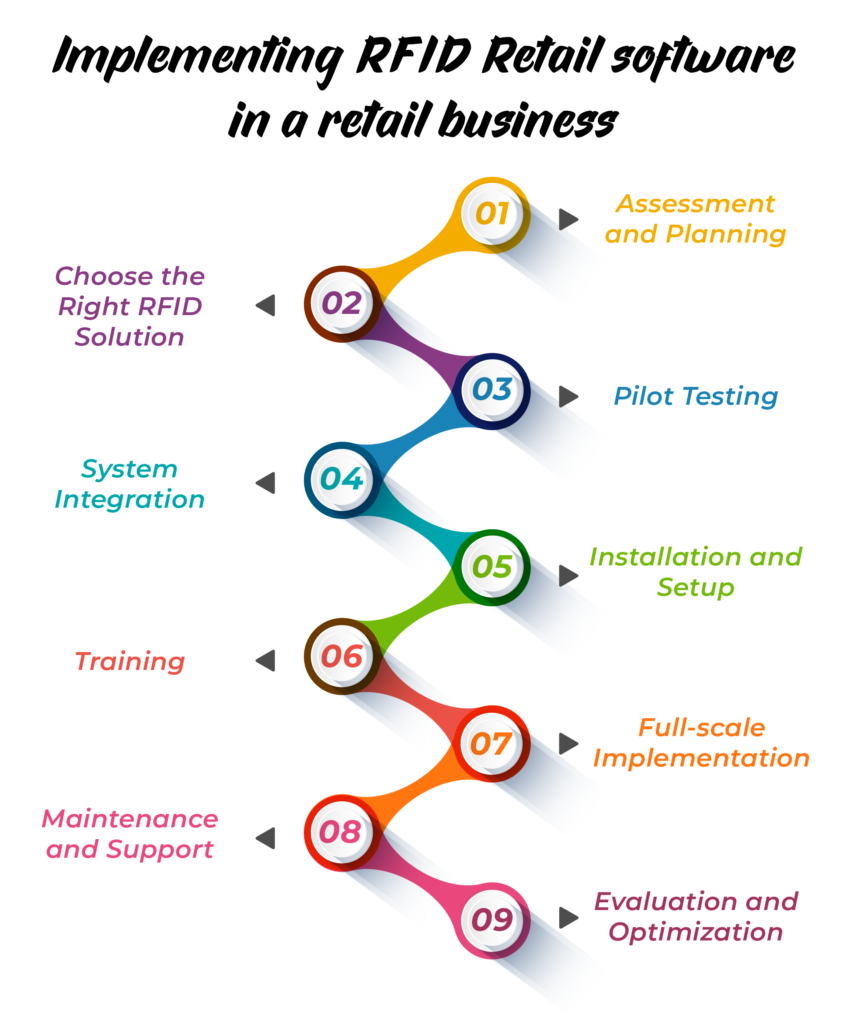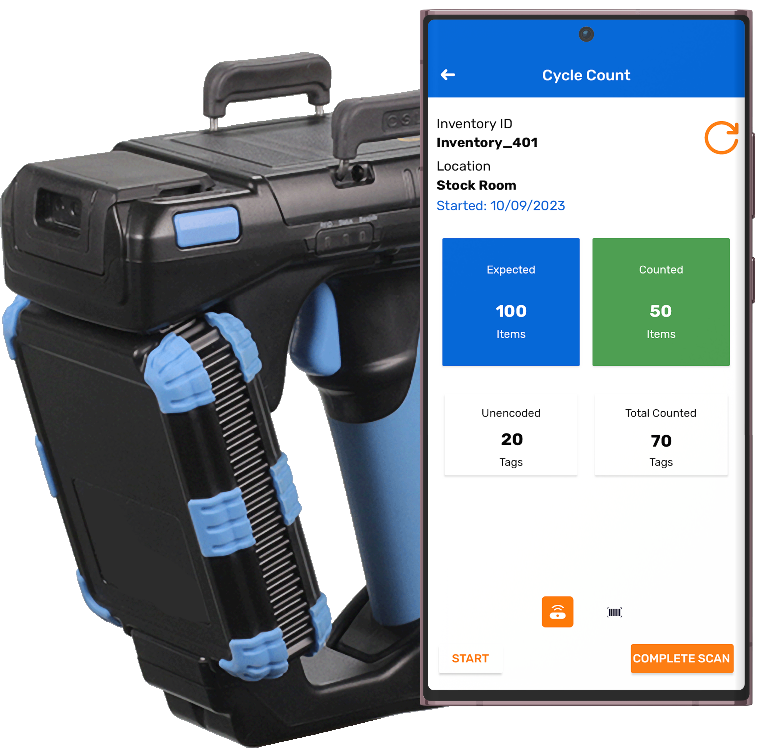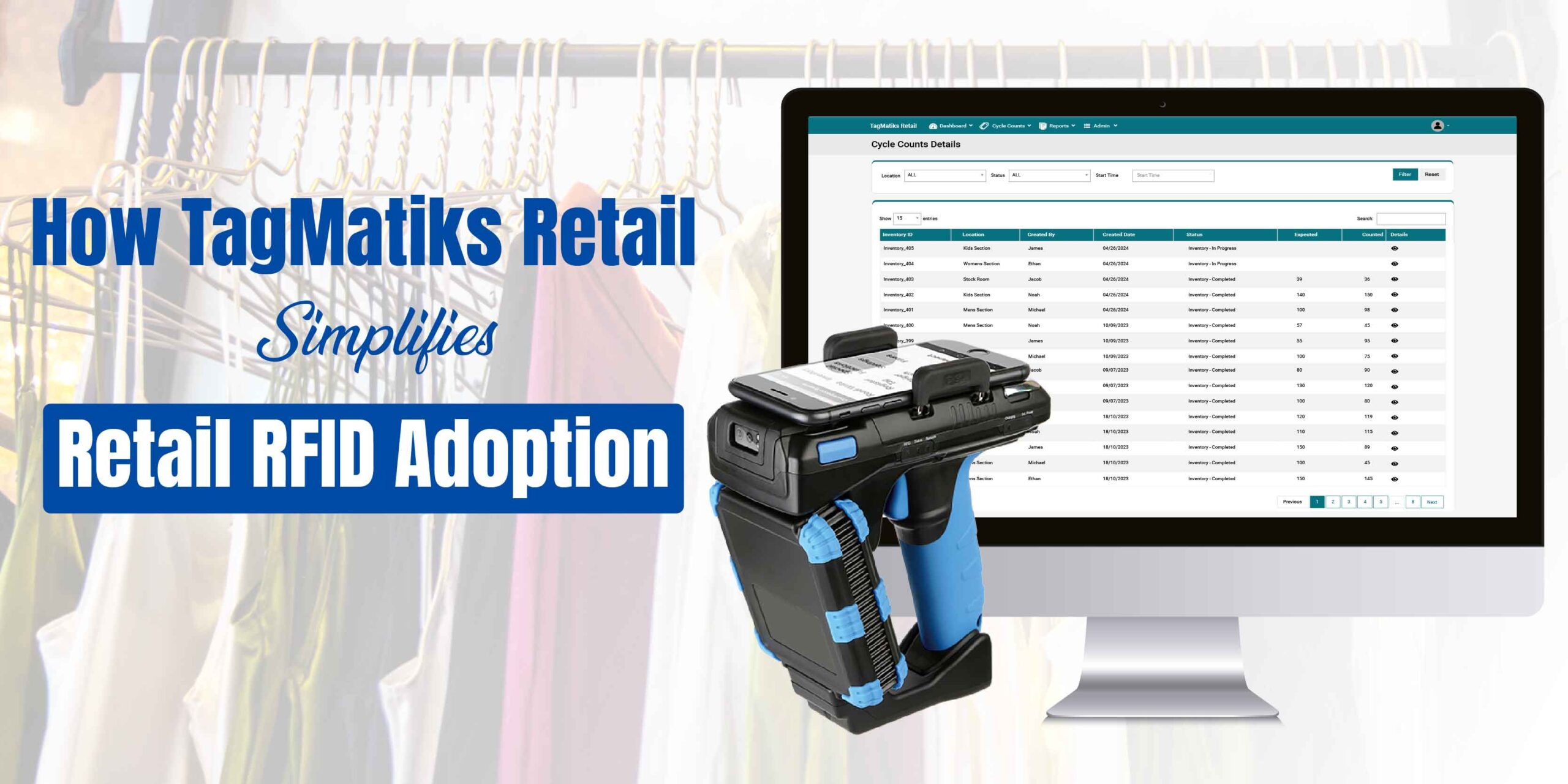TagMatiks Retail RFID Software plays a crucial role in simplifying the adoption of RFID technology in the retail industry.
Implementing RFID Retail software for a retail business
Involves several steps to ensure a smooth and effective transition. Here’s a comprehensive guide

1. Assessment and Planning
Identify Objectives: Determine the goals you aim to achieve with RFID (e.g., inventory accuracy, loss prevention, improved customer experience).
Evaluate Current Systems: Analyze your current inventory and point-of-sale (POS) systems to understand how RFID can integrate with them.
Budgeting: Establish a budget for RFID hardware, software, and implementation costs.
2. Choose the Right RFID Solution
Software Selection: Choose an RFID software that fits your business needs. TagMatiks Retail RFID Software is one such option, known for its ease of use and comprehensive features.
Hardware Selection: Select RFID tags for retailers, RFID readers, and RFID antennas that are compatible with your chosen software. The right retail RFID labels are crucial for effective inventory management.
3. Pilot Testing
Small-scale Implementation: Start with a pilot project in a limited area of your store to test the RFID system.
Data Collection: Monitor the performance and gather data to evaluate the effectiveness of the system.
Adjustments: Make necessary adjustments based on the pilot results.
4. System Integration
Integrate with Existing Systems: Ensure the RFID software integrates seamlessly with your inventory management and POS systems.
Data Migration: Transfer existing inventory data to the new RFID system.
5. Installation and Setup
Tagging Inventory: Attach RFID labels for retail store items in your inventory to ensure accurate tracking and management.
Reader Installation: Install RFID readers at strategic locations such as entrances, exits, and shelves.
Software Configuration: Configure the RFID software according to your business needs, including setting up inventory categories, user roles, and reporting features.
6. Training
Staff Training: Train your staff on how to use the RFID system, including tagging items, operating readers, and using the RFID software.
Ongoing Support: Provide ongoing support and training to address any issues and ensure smooth operation.
7. Full-scale Implementation
Expand System: Gradually expand the RFID system to other areas of the store or other store locations.
Monitor Performance: Continuously monitor the system’s performance and make improvements as needed.
8. Maintenance and Support
Regular Maintenance: Schedule regular maintenance for RFID hardware and software to ensure optimal performance.
Technical Support: Establish a support system for troubleshooting and resolving any issues promptly.
9. Evaluation and Optimization
Performance Review: Periodically review the performance of the RFID system against your initial objectives.
Continuous Improvement: Identify areas for improvement and update the system accordingly to keep up with technological advancements and changing business needs.
TagMatiks Retail
It is a comprehensive RFID solution designed to simplify inventory management and improve operational efficiency in retail environments. Here’s a detailed overview of its features and benefits
Features & Benefits of TagMatiks Retail
Easy Installation & Setup
Out of the Box Solution: TagMatiks Retail is ready to use with minimal setup required.
Support Resources: Includes knowledge articles, videos, quick start guides, and more to help you get started quickly.
Quick RFID Printing Workflow
Off the Shelf Workflow: Print and encode RFID labels for in-store or warehouse labeling.
Built-in Serialization: Ensures easy and accurate RFID tagging of inventory.
Robust Mobile Apps & Cloud Portal
Mobile Applications: Available on iOS and Android, these apps allow for easy data collection.
Cloud Portal: Facilitates data visualization and solution management.
Extensive Reporting
Out of the Box Reports: Includes cycle count history, inventory item history, location inventory reports, and more.
Custom Reports: Allows for the creation of tailored reports to maximize the utility of collected data.
Inventory Reconciliation
Simple Reconciliation: A powerful feature to understand variances found during the cycle counting process.
Inventory Locating Feature
RFID Handhelds: Pinpoint inventory to quickly identify misplaced or hard-to-find products.
RFID Based Cycle Counting
Efficient Counting: Use RFID labels to cycle count inventory, identifying matched, missing, and misplaced products swiftly.
In Built Analytics Powered By RFID and AI
Advanced Analytics: Leverage AI and RFID data for comprehensive operational and inventory analytics.
Powerful APIs for Integration
Simple Integration: Easy integration of RFID data with other systems such as POS, WMS, or ERP through out-of-the-box APIs.
Extensive RFID Device Support
Device Flexibility: Supports a wide range of RFID devices for ease of adoption and flexible rollouts.

Designed for Various Retailers
-
General Merchandise Retailers
-
Apparel and Soft Goods
-
Luxury Goods
-
Sporting Goods
-
Jewelry
-
Bridal
Why Use TagMatiks Retail?
Inventory Excellence
Efficiency: Use RFID handhelds to reduce inventory counting time and improve accuracy drastically.
Configurability
Customization: A variety of configurations to ensure the solution is adoptable for every retailer.
Enterprise Solution
Scalability: Designed for the cloud, making it easy to manage inventory across multiple retail stores.serialization Management
Accuracy: Manages serialization to ensure proper RFID label encoding and prevents duplicates.
Complementary Solution: TagMatiks Print Manager helps suppliers label products with RFID.
Conclusion
TagMatiks Retail RFID Software simplifies the adoption of RFID technology in the retail industry by offering an easy-to-deploy, cost-effective, and scalable solution. With a focus on RFID in retail, its comprehensive features improve inventory management, enhance customer experience, and boost operational efficiency, making it a valuable tool for modern retailers.
